While working, activities like heavy lifting boxes or tools may put you at risk of suffering physical trauma and causing work-related injury. These may range from bruises, strains, and sprains to falls, fractures, and traumatic injuries.
Workplace injuries may be caused due to inadequate safety measures, improper training, or the wrong usage of personal protective equipment. Some workplace injuries are just the result of accidents.
Suffering from injuries in your workplace may cause not only a physical but also an emotional impact. Addressing them properly will prevent them from escalating to a more severe issue.
Some of the most common orthopedic work-related injuries include:
- Tears in cartilage
- Fractures and dislocations
- Injuries to the hip and Knee
- Disruptions in ligaments
- Strains in muscles
- Sprains in tendons
- Chronic pain in the neck, back, hip and knee
- Slips and falls
- Trauma injuries
Depending on your occupation and the specific tasks involved, potential work-related injuries can be categorized into various types, which include:
Overexertion is a common work-related injury that occurs when you exceed your physical limits, causing significant trauma to the body.
The common causes of overexertion are activities like lifting, carrying, throwing, pushing, holding, and turning. Executing these tasks correctly with proper posture, appropriate techniques, and regular breaks is crucial to avoid overexertion.
Overexertion can lead to chronic pain in the back, knee, and hip or worsen other underlying conditions that you might have. Overexertion can potentially lead to:
- Injuries to the back can be treated with rest and medication, but severe injuries might require surgery or physical therapy.
- Strained muscles are common when lifting, carrying, or moving objects.
- Joint and connective tissue injuries like tendon tears, dislocated joints, or swollen connective tissue may require surgical interventions in severe cases.
Repetitive motion can lead to wear and tear in the body. Many professions require performing repetitive tasks such as typing on a computer, working on an assembly line, maintaining poor posture while sitting at a desk, or reaching overhead for extended periods. It can lead to stress and strain on the body. Proper periodic breaks can help prevent repetitive injuries.
Common repetitive injuries include:
- Carpal tunnel syndrome occurs when the median nerve, which travels from the forearm to the hand, is compressed. It may cause numbness and loss of motion, strength, and flexibility in severe cases.
- Tendinitis is inflammation of the tendons, thick fibrous cords that attach muscle to bone.
- Bursitis is swelling of the bursa, the tiny, fluid-filled sacs that cushion the bone and muscles, tendons, or skin.
- Rotator cuff injuries are caused by partial or complete tears in the rotator cuff, a group of muscles and tendons surrounding the shoulder joint.
Work-related injuries resulting from slips, trips, falls, sitting, bending, or reaching are common occurrences that may initially seem minor but can escalate if overlooked.
A significant workplace risk is that office environments with uneven flooring and clutter can lead to slips and fall injuries. Healthcare, construction, and food service sectors often face higher slips and fall injury risks.
Slips, trips, and fall injuries include:
- Injuries to soft tissues, including muscles, ligaments, and tendons, can lead to tenderness, pain, loss of active motion, and swelling in the affected area.
- Fractures of the hip can lead to sudden and severe hip pain and might need hip surgery to be corrected.
- Injuries to the back and spinal cord are a common occurrence and can affect the quality of your life.
The treatment for your work-related injury may vary depending on the severity and kind of injury you sustain. The treatment can include:
You can do basic first aid for small injuries, like cleaning your wound, putting on a bandage, and taking some medicine to ease pain and swelling. Heat-cold compressions, exercise, and rest can also help reduce pain and inflammation.
Depending on the severity of your injury, the treatment might include using topical or oral medications, physical therapy sessions, and using external fixation methods such as casts, braces, splints, and other devices to improve strength and movement.
Physical therapy includes tailored movement, exercises, and activities to address injuries and movement dysfunction. Physical therapy can help manage mild injuries, post-surgery recovery, and rehabilitation by effectively reducing pain and improving mobility.
In cases of severe injury like fractures, surgical interventions for internal fixation might be necessary. Procedures might be minimally invasive or a larger procedure, based on the damage to the body part.
Most work-related injuries can be prevented by correctly using, storing, and managing tools. Here are some tips to avoid injuries at the workplace:
- Complete a thorough training program before operating heavy machinery.
- Conduct regular inspections of your workspace to identify potential hazards.
- Implement safety policies.
- Always wear personal protective equipment.
Injuries are unexpected and unavoidable sometimes, be it at the workplace. Seeking immediate and proper attention is crucial for avoiding complications. With his extensive experience and expertise, Dr. Ulric Bigby specializes in treating work-related injuries and providing personalized care and guidance for recovery.
Schedule your consultation online or get in touch with Dr. Bigby at one of his three locations:


